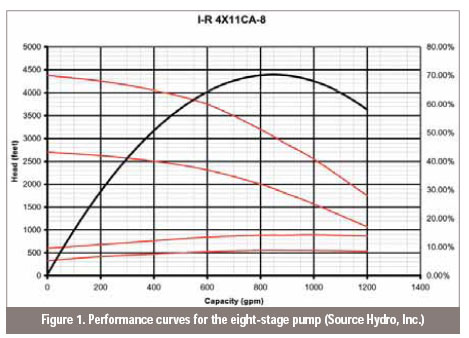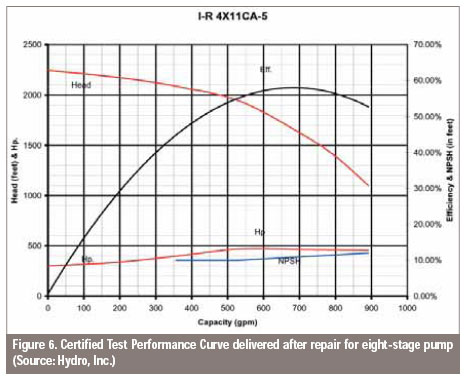Pumps & Systems
June, 2008
With large-scale consolidations of OEMs in the pump industry and the closure of foundries in North America, advanced non-OEM pump rebuild shops have emerged that offer creative solutions, competitive pricing and quick turnaround time to pump users. A qualified independent rebuild shop employing highly experienced personnel and a range of advanced technologies can offer cost effective and creative solutions to long lead times on new pumps, which often range from 6 to 12 months.
The following example demonstrates how a petrochemical pump user utilized the capabilities of a competent pump repair shop to achieve a cost-effective solution for their plant expansion.
Creative Solutions for Chemical Plant Expansion
A petrochemical plant in the Gulf Coast region was expanding production. Because of the time frame involved in completing the project, they elected to source a surplus pump from the used pump market and modify it to suit their needs rather than purchasing a new pump. Delivery of a new pump would have taken 6 to 8 months and they wanted to be online in just 44 days! This plant needed a solution to this challenging engineering problem and intensely demanding production schedule.
The plant chose to work with a pump repair shop that employs CAD/CAM, CMM and Romer Arms in addition to Computational Fluid Dynamics software and material analyzers. With the added resources of skilled engineers and experienced technicians, many with engineering or operations backgrounds from major pump manufacturers, this plant chose a repair shop with exceptional hydraulic design and reverse engineering capabilities to address their emergency situation.
With guidance from the repair shop, the plant purchased an 8-stage pump that could be modified to meet their specific needs. After a thorough engineering review and inspection of the existing pump, the pump repair shop not only proposed a solution to the emergency situation, but also offered upgrades to improve both pump performance and reliability of the pump for this chemical application.
Engineering Review and Proposed Upgrades and Modifications
An assessment of hydraulic performance is high on the list whenever upgrades are contemplated. For this particular pump, the performance curves (see Figure 1) had to be examined first. Then, a dimensional drawing of the barrel (casing) had to be prepared by the repair shop. These two steps enabled the parties to determine desired and feasible modifications and upgrade options.

Figure 1. Performance curves for the eight-stage pump (Source Hydro, Inc.)
The pump repair shop recommended several modifications and upgrades. The engineers proposed modifications to shorten the barrel and de-stage the pump to meet the specific hydraulic conditions. The plant required that the process pump produce 740-gpm at 1,500-ft of head. To achieve the required hydraulic performance, the engineers of the repair shop proposed to reduce the pump from eight stages to five stages. The shorter pump shaft would also provide improved rotor stability.
The shop also recommended that the single pusher seal be replaced by a double tandem seal; due to the toxic nature of the product pumped, a stronger, more reliable sealing design was required. The stuffing box needed to be redesigned to accommodate the new seal.
Reliability improvements to the overall performance of the pump also included engineering a more efficient way to vent and drain the pump. The repair shop suggested using tungsten carbide on the wear rings, bushings and balance drum in case the pump should ever “run dry.” Lastly, new bearing housing seals needed to be added and the baseplate required modifications to accommodate the shorter pump and a new motor.
The Repair Process and Performance Testing
While it is not uncommon to de-stage a multistage pump to meet changes in operating requirements, the experienced engineers employed at the shop offered a creative solution by also shortening the pump’s barrel.
First, a dimensional drawing of the new pump barrel was created so precise measurements could be used to mark the original casing for cutting. The newly cut barrel was then machined for the proper weld preparation. After machining, the two parts were fitted together on a vertical turret lathe to establish orientation of the barrel feet and then tack welded in position. The barrel was then welded using the sub-arc method. After the welding was completed, a radiographic examination was performed. The pump barrel was then finish machined.
Once the casing modification was complete and the rotor balanced to API criteria, the pump was assembled and ready to be tested. The shop used their in-house test stand to provide a certified performance curve to the plant to show that the modifications produced the specified head and flow required for the application.

Figure 6. Certified Test Performance Curve delivered after repair for eight-stage Pump (Source: Hydro, Inc.)
Accomplishments
The customer had requested a pump that would process 740-gpm at 1,500-ft of head, and their pump repair shop delivered. Not only did this repair shop exceed all of the engineering design conditions, they also met the client’s demanding 44 day schedule! Ordering a new pump to meet their needs would not only have meant a 6 to 8 month delay, but would also have cost the plant millions of dollars in lost production.
Lessons Learned
Some non-OEM pump rebuilders can provide creative solutions delivered quickly and cost effectively. A repair shop is a viable option to consider when facing long lead times and should be seriously considered if they utilize an in-house engineering team, state of the art technology, in-house hydraulic design experts and testing capabilities that can produce certified performance curves.
With reliable engineering analysis, specialized processes and quality service, a pump repair shop can apply today’s technology to yesterday’s pumps so pump users don’t always have to purchase new pumps. Engaging a credible repair shop can save a substantial amount of money, not only in initial repair or purchase costs, but also with reliability improvements that increase pump life and performance.
http://www.pump-zone.com/pumps/pumps/rerating-a-pump-for-a-new-service.html
